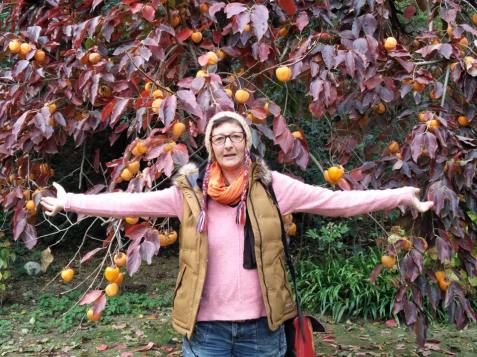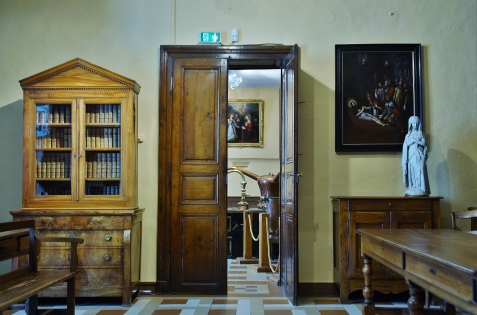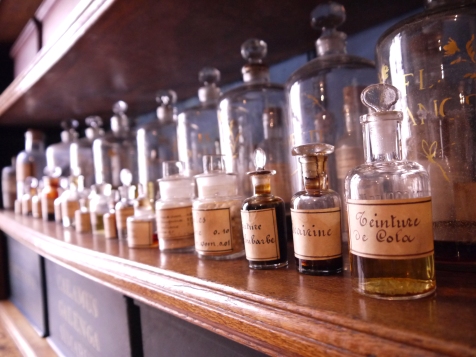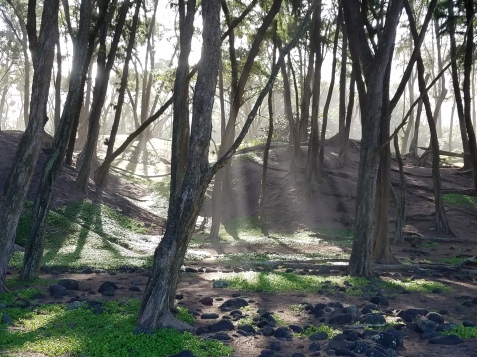The more I work with my own trauma and facilitate workshops about trauma, the more I realize the importance of working with historical and transgenerational trauma. We are not isolated humans in isolated lives, we are part of a larger picture. That larger picture consists of our own individual family trees and their place within a community and a larger collective.
When working with your own healing journey or with others as a practitioner, it is important to remember this larger picture. I have found this approach especially enlightening when emotional patterns or reactions arise that don’t seem to have a root in this lifetime. The same goes for chronic physical symptoms. Chronic health issues can affect people through generations as reactions to past traumas. In the same way, health issues can be passed down from specific historical traumas in entire communities and cultures.
Unresolved trauma in past generations finds a way to repeat itself. We feel the trauma inside ourselves, until someone finally transforms it. I have noticed that we seem to be living in a time in history when many of us are being called to do this transformational work and integrate traumas that have been passed down from past generations. The more we collectively become aware of the need to re-think our way of being in the world and where we are heading, the more it becomes apparent that in order to heal the future, we need to heal the past. As we work to transform our personal traumas, these transformations echo out into our families and communities.
There are three common emotional textures that are often related to historic and transgenerational traumas: Loss and Despair, Victimhood, and Shame and Guilt. If these are first reactions that you or your clients have to common challenges, obstacles and confrontations, the solution could be in healing the past.

As I worked to unearth my own ancestral narrative and untangle the threads that lead to my great-great-grandmother, an Indian tea tribe girl, I simultaneously discovered the secret my own mother had been keeping that involved a whole race. I knew my mother was born in India and even though her sister and other members of our family looked Indian, this was never talked about and if mentioned by someone else, it was vehemently denied. Through my research and piecing fragments together, I found out that my maternal lineage were Anglo-Indians. Anglo-Indians are a race that was created during British colonial rule of India to provide ‘middle men’ between the British and the Indian laborers. It has sometimes referred to as the Secret Race.
In piecing together the hidden aspects of my ancestral lineage, I have not only been able to see where certain emotional and life patterns that I did not understand in my own life came from, but also how this individual lineage fits into the historical traumas of a whole community. Cistus essential oil has been a great ally in the work of bringing secrets and hidden information to the surface. I’ll discuss cistus more below.
Workingseriously on transgenerational trauma involves a lot of dedication and hard work. The aim in identifying, transforming and integrating these passed down traumas is that they stop being hard wired. Defensive patterns can become food for growth and healing. As they become conscious and a narrative is formed, we can stop hurting ourselves and others by unconsciously reproducing them.
A good starting point is to take time to reflect on family lineage, whilst mindfully attending to how one is feeling emotionally, what is going on physically and what thoughts are arising. Remember: ‘To feel is to heal’. You could map out a simple family tree of the branch you are interested in working with and explore your place within in it. What is your relationship to the suffering of your family? Are you willing to feel it?
Ruh Khus, commonly known as wild vetiver (Chrysopogon zizanioides), can be a really good essential oil to create a warm and nurturing groundedness from which to undertake this time of reflection. It is important to feel earthed, safe and embodied in order to be able to be mindful of what comes up. The physical body holds a lot of information in its cells, known as cellular memory. The more we inhabit our bodies during this work and the safer we feel, the more those cellular memories can rise to the surface.
Once time and attention have been given to this form of reflection, gradually, a direction or a feeling may point to a pattern or reveal a fragment that is asking to be explored more deeply. To encourage our cells to really let go of deeply buried information, we can use the essential oil ofCistus (Cistus ladaniferus). Cistus really knows how to dig deep and does not give up until what needs to come up from the depths has been released.
Remember to look for links between your individual trauma, your family trauma and stories of collective trauma. By doing this we recognize the threads that connect individual, transgenerational and collective trauma. This enriches our strategies for resolving these conflicts and systems.
For women, I believe there is a lot of work to be done with our maternal inheritance.Mitochondrial DNA (mtDNA) is just a small percentage of our DNA, separate from nuclear DNA and is passed down uniquely through the maternal line, through the egg cells. There is a ‘She’ that is the same ‘She’ in myself, my mother, my grandmother, my great-grandmother and so on. This lineage is calling to be healed. The feminine in our bloodlines is pushing us to give her a voice: The voice she never had, the name that was taken from her, the place that was stolen from her. Could this transgenerational ‘She’ be where the feminine is rising from in today’s world?
Trace your female lineage. Trace the emotions, stories, traumas woven through it and start to look at what needs to be healed and transformed. At first there may be recurring emotions that come up (i.e. personal trauma). This may lead to researching the actual ancestral story more (historical trauma). Or it could be the other way around. Unearthing the ancestral story may reveal forgotten personal trauma. Maybe the story has been passed down, but no one has yet put two and two together and connected the emotions within the family system to the story. Everyone’s journey is unique.
Helichrysum (Helichrysum italicum), the beautiful and powerful Immortelle also known as Everlasting, helps us transform the wounds that come through from our ancestral stories. Its earthiness and connection to the feminine brings us into our body’s wisdom, the place where this cellular information is stored. Helichrysum remembers the heart, a vital aspect in this type of healing where self-compassion is primordial and right relationship to ourselves is the vessel. Once these things are in place, helichrysum is the balm that soothes the pain of the unconscious forces as they come into the light and touch our souls. Its wound healing properties bring disconnected parts of ourselves back together to be held at a central point of alignment. This is ideal when identifying and incorporating transgenerational trauma. Helichrysum helps us clear the fears that act as blockages to feeling and opening to the whole of ourselves.
I have become aware that often we hold a key to this transgenerational trauma and healing through every other generation. By this I mean we hold a key that fits with our grandmothers, whose key fits with our great-great grandmother (their grandmothers) and so on. It’s interesting to note how diseases and physical illnesses are often passed down in this way, too. I have found that we often resonate with someone further back in our family tree. Bear in mind that what has been hidden, repressed, distorted in the past will often create a counter force that pushes to re-surface with vengeance through a member of a later generation.
As we advance with our internal and historical detective work and these narratives become clearer, a deep integration process occurs. This integration involves a gradual perceiving and acknowledging of our ancestors with our conscious minds. They take back their place in the family tree and the integrative healing takes place in the past, the present and the future simultaneously.
 In my own journey, I travelled to India to trace the story. I was able to reunite deep cellular memory with historical fact. I was also lucky enough to be accompanied by sacred Indian oils and attars that spoke to my roots through my limbic brain. India, through her people, her colors, her sacredness and her smells reminded me that I belonged. Mitti attar, madefrom baked earth, as well as
In my own journey, I travelled to India to trace the story. I was able to reunite deep cellular memory with historical fact. I was also lucky enough to be accompanied by sacred Indian oils and attars that spoke to my roots through my limbic brain. India, through her people, her colors, her sacredness and her smells reminded me that I belonged. Mitti attar, madefrom baked earth, as well as
Rose attar, the mother note, both became healing allies, bridging the gap of time. Jasmine and tuberose healed the young tea tribe girl within me. She was finally able to smell and anoint herself with precious oils that she would have only been able to dream of as a poor slave girl.
Beyond my own cultural story, I find that the precious champaca absolute—just a sniff at the right moment—expands our inner world, brings in a light, removes obstacles and allows the integration process space to happen. I have been using it constantly as my journey intensifies. When the obstacles within come up with force and demand to be stepped through, champaca blows open the healing space. This work is powerful healing and demands powerful allies.
A central part of becoming whole is allowing the ancestors to reincarnate within this lifetime’s personality. For women this is becoming intimate with the ‘She’ that has always been there. It is ‘She’ that needs healing.
To summarize: The following stages, in a simplified manner, may be helpful to remind you where you are at in the journey and what the challenges are that need to be worked on.
- Confronting the trauma – make sure you are grounded and have tools to help you with this; grounding oils (Ruh khus, nard, angelica, etc.), journal, collage, therapist, etc.
- Understanding the trauma: looking for patterns, family systems, threads that link to past generations. Cistus essential oil.
- Feeling and releasing the pain of historical trauma – to feel is to heal (helichrsyum, rose attar, geranium, etc.)
- Going beyond the trauma and integrating the narrative. The trauma becomes your gift. Your strength is in the integration of your unique narrative. Find oils that connect you to a specific place, sense of belonging. For the integration process, champa
ca, angelica, myrrh, etc.
For personal and global re-alignment, we must open up and tell our stories and the stories of our ancestors.
I now offer group classes and private consultations live or by Skype on this subject. Please email me at info@aromagnosis.com for more information and to schedule a consultation.
To order our oils and attars: cathysattars.com
We are constantly adding oils to our selection and hope to be offering cistus and helichrysum soon.
Dear everyone that has followed this blog over the years, this will be the last entry as I now have two sites where I blog and send regular newsletters to subscribers , www.aromagnosis.com, which is being transformed into an online school and www.cathysattars.com.
 . It will include travel journal entries about our trip to India. (In the future, we hope to organize aromatic adventures to India for those of you who may be interested.) It will also include musings about my journey of healing historical trauma and the detective work involved. We will also share regular up-dates about Moosa’s distillations and other sacred oils we choose to work with. There will be information about how to use these oils, including anointing, journeying with them, their healing properties, etc.
. It will include travel journal entries about our trip to India. (In the future, we hope to organize aromatic adventures to India for those of you who may be interested.) It will also include musings about my journey of healing historical trauma and the detective work involved. We will also share regular up-dates about Moosa’s distillations and other sacred oils we choose to work with. There will be information about how to use these oils, including anointing, journeying with them, their healing properties, etc.

































